Your car pulls to one side when braking because one wheel is slowing down harder than the other, usually from problems like a stuck brake caliper, uneven brake pads, warped rotors, or poor wheel alignment. This uneven braking force makes the vehicle drift left or right instead of stopping in a straight line. It is not just uncomfortable but also a safety risk since it increases stopping distance and reduces control. In this guide, we will explain the common causes, how to check for them, and the steps to fix the issue so your car feels safe and stable again.
Table of Contents
- What It Means When Your Car Pulls to One Side While Braking
- Why This Problem Can Be Dangerous
- Common Causes of Pulling During Braking
- How to Diagnose the Problem at Home
- Step-by-Step Fixes for Common Causes
- When to Seek Professional Help
- Preventing Brake Pulling in the Future
- Cost Expectations for Common Repairs
- Conclusion
- FAQs
What It Means When Your Car Pulls to One Side While Braking
If your car drifts or pulls left or right when braking, it means that the braking force isn’t being applied evenly across your wheels. One side is slowing down more than the other, causing the vehicle to veer in that direction.
Drivers often describe it as:
- “My car pulls left when I brake hard.”
- “My steering wheel jerks right when braking.”
- “Car feels unstable or drifts when slowing down.”
While this may feel like a minor annoyance at first, it’s actually an early warning sign that something is wrong. Ignoring it can lead to increased wear, costly repairs, and even accidents.
Why This Problem Can Be Dangerous
Pulling while braking isn’t just uncomfortable—it’s dangerous. Here’s why:
- Longer stopping distances – Uneven braking reduces the efficiency of your brakes, meaning you’ll need more distance to come to a full stop.
- Loss of control – Sudden veering during hard braking can push your car into another lane or off the road.
- Uneven tire wear – Constant pulling places more stress on one side, leading to faster tire wear and blowout risks.
- Hidden brake damage – Issues like seized calipers or warped rotors only worsen over time if not fixed.
Because brakes are your car’s most critical safety feature, addressing this issue quickly is essential for both safety and long-term savings.
Common Causes of Pulling During Braking
There isn’t just one reason your car pulls to one side when braking. Below are the most common culprits, explained in detail.
Stuck or Seized Brake Caliper
The brake caliper squeezes the pads against the rotor to stop your car. If one caliper sticks or seizes, that wheel applies more braking force than the other, causing the vehicle to drift. This is one of the most common reasons cars pull when braking.
Uneven Brake Pad Wear
If one brake pad is more worn down than the other, the braking force will be uneven. Pads can wear unevenly due to poor installation, bad calipers, or simple neglect. This often shows up as squealing noises or reduced braking power.
Warped Brake Rotors
Rotors can become uneven from overheating, aggressive driving, or worn brake pads. A warped rotor makes the brake pads grip inconsistently, causing shaking, vibrations, or pulling.
Low or Uneven Tire Pressure
Sometimes the issue isn’t the brakes at all. If one tire has low air pressure, it changes the balance of your car and causes drifting during braking. Checking tire pressure is the easiest first step.
Wheel Alignment Issues
If your car’s wheels aren’t aligned, it won’t track straight—especially noticeable under braking. Misalignment usually comes from hitting potholes, curbs, or regular wear and tear.
Suspension or Steering Problems
Worn suspension components, such as ball joints or control arms, can make your car unstable when slowing down. Similarly, steering issues can cause the car to veer unexpectedly.
Brake Fluid or Hose Trouble
Brake hoses can collapse internally, restricting fluid flow to one side. Low or contaminated brake fluid can also create uneven braking power.
How to Diagnose the Problem at Home
Before rushing to a mechanic, you can do some basic checks yourself:
- Check tire pressure on all four wheels and inflate to the manufacturer’s recommended PSI.
- Look at brake pads through the wheel spokes. If one side looks thinner than the other, that’s a red flag.
- Test on an empty road: Drive straight and brake gently. If it always pulls to the same side, it’s likely brake or alignment related.
- Feel the steering wheel: If it shakes during braking, warped rotors could be the issue.
- Check brake fluid level: Low or dirty fluid may cause uneven braking response.
If you identify any obvious issues, you’ll know what to address first. If not, it’s time for professional inspection.
Step-by-Step Fixes for Common Causes
Here are practical solutions for each issue:
- Stuck caliper → Replace or rebuild the caliper. Sometimes cleaning can help, but often replacement is best.
- Uneven brake pads → Install new pads on both sides of the axle (never replace just one).
- Warped rotors → Resurface or replace rotors for smooth braking.
- Low tire pressure → Inflate or replace damaged tires.
- Wheel alignment → Get a professional alignment service.
- Suspension issues → Replace worn ball joints, control arms, or bushings.
- Brake hoses/fluid → Replace collapsed hoses and flush old brake fluid.
Most of these repairs are affordable if caught early. Waiting too long only makes the damage worse.
When to Seek Professional Help
While you can handle simple fixes like tire pressure checks, most brake issues need expert attention. Visit a mechanic if:
- The pull is strong and immediate.
- You notice grinding, squealing, or burning smells.
- The brake pedal feels soft or spongy.
- Your steering wheel vibrates heavily.
Brakes are not an area to gamble with. A certified technician can diagnose the problem quickly and ensure your car is safe.
Preventing Brake Pulling in the Future
Prevention saves time, money, and stress. Here’s how to avoid pulling problems:
- Get regular brake inspections every 12,000 miles.
- Rotate tires every 5,000–7,000 miles to ensure even wear.
- Keep tire pressure balanced.
- Flush brake fluid every 2–3 years.
- Avoid slamming brakes unnecessarily, which overheats pads and rotors.
Simple maintenance habits go a long way toward preventing this issue.
Cost Expectations for Common Repairs
Knowing the possible costs helps you prepare:
- Brake pad replacement: $150–$300 per axle
- Rotor resurfacing or replacement: $200–$400
- Brake caliper replacement: $300–$800
- Wheel alignment: $75–$150
- Tire replacement: $100–$250 each
- Brake fluid flush: $75–$120
Fixing the problem early can save hundreds compared to waiting until multiple components fail.
Conclusion
If your car pulls to one side when braking, it means one wheel is slowing harder than the other, often due to brake, tire, or alignment issues. The fix may be as simple as checking tire pressure or as involved as replacing calipers or rotors, but it should never be ignored. Addressing the problem early restores safe, straight stops and protects you from bigger repair costs later.
FAQs
Why does my car pull left when I brake?
Your car pulls left when braking because one side applies more force, often caused by a stuck caliper, uneven brake pads, or low tire pressure.
Can bad alignment cause pulling during braking?
Yes. If your wheels are out of alignment, the car will not track straight. This misalignment becomes more noticeable when you press the brakes
Is it safe to drive if my car pulls when braking?
No. Driving with brake pull is unsafe because you lose control, need longer stopping distance, and risk accidents. Always fix the problem quickly.
How do I know if my brake caliper is stuck?
A stuck caliper usually causes pulling, uneven pad wear, heat, or burning smells from the wheel. These are clear warning signs to check immediately.
Can uneven tire pressure cause braking pull?
Yes. Low tire pressure on one side changes balance, making the car drift during braking. Keeping tires inflated evenly prevents this problem.
Do I need to replace both brake pads if one is worn?
Yes. Brake pads should always be replaced in pairs on the same axle. This keeps braking force even, prevents pulling, and improves stopping safety.
How much does it cost to fix this issue?
Repair costs vary by cause. Tire or fluid fixes may cost $100, while caliper or rotor replacements can range from $300 to over $800.
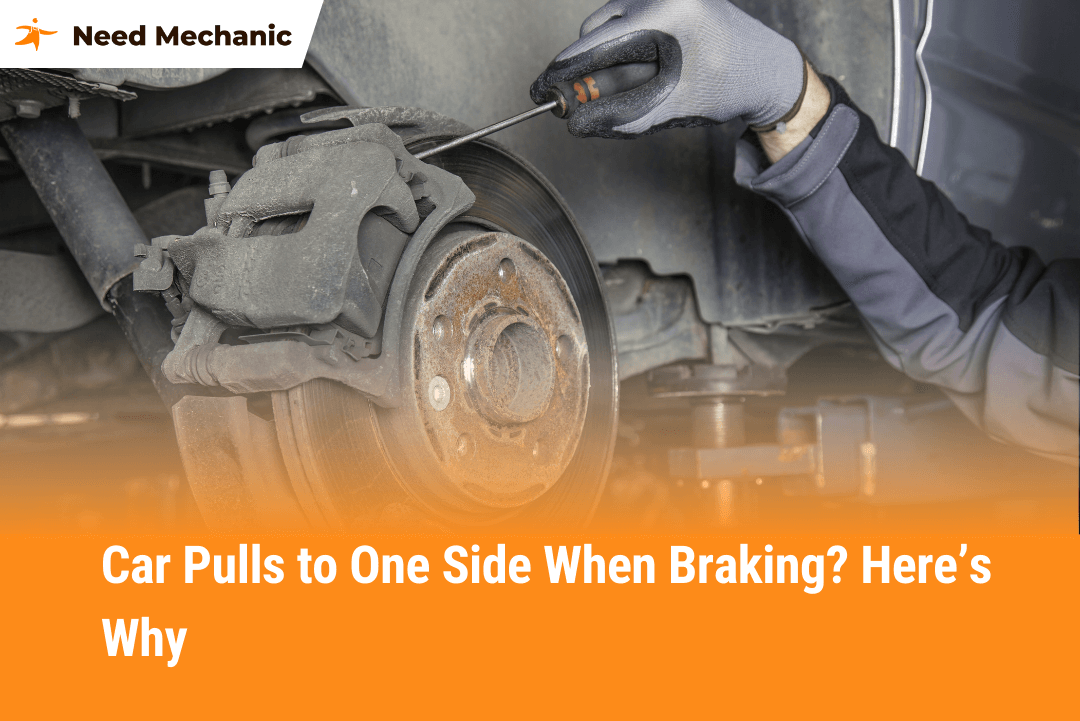

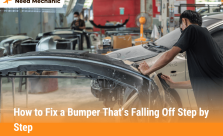
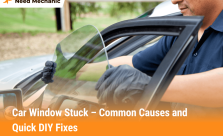
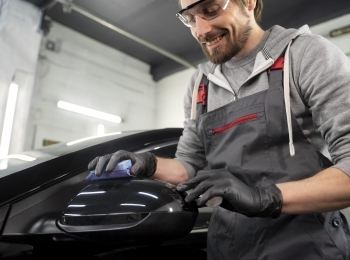

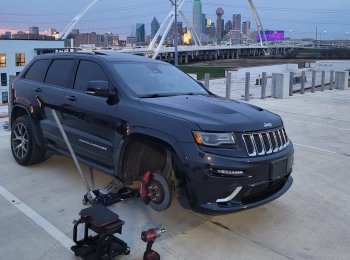

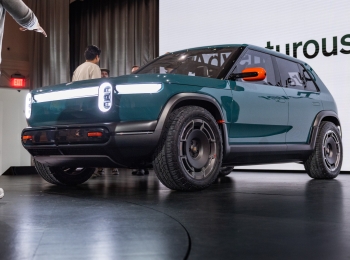



Leave a Reply